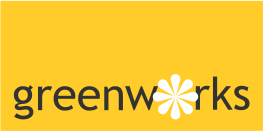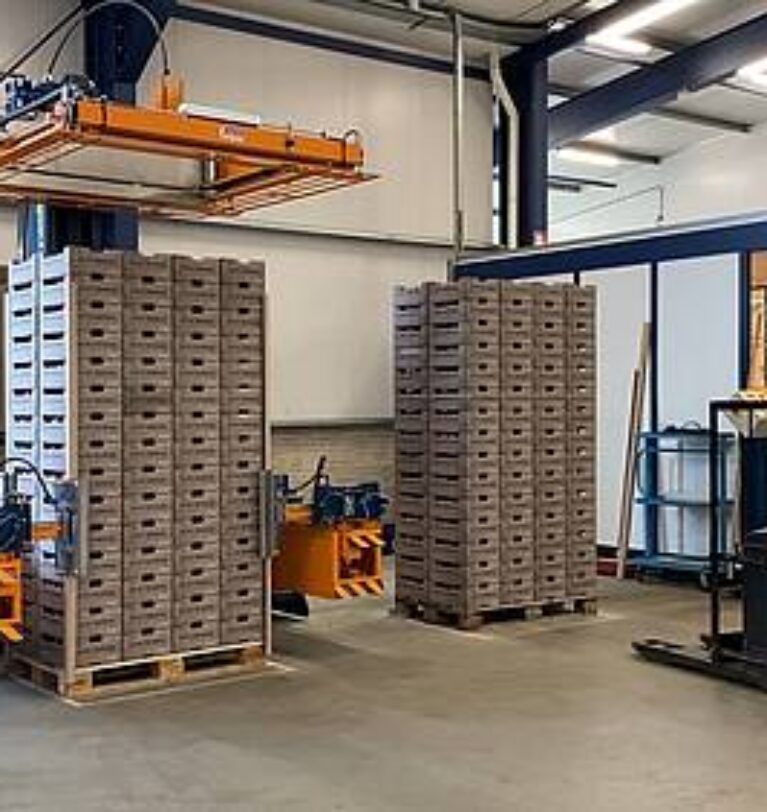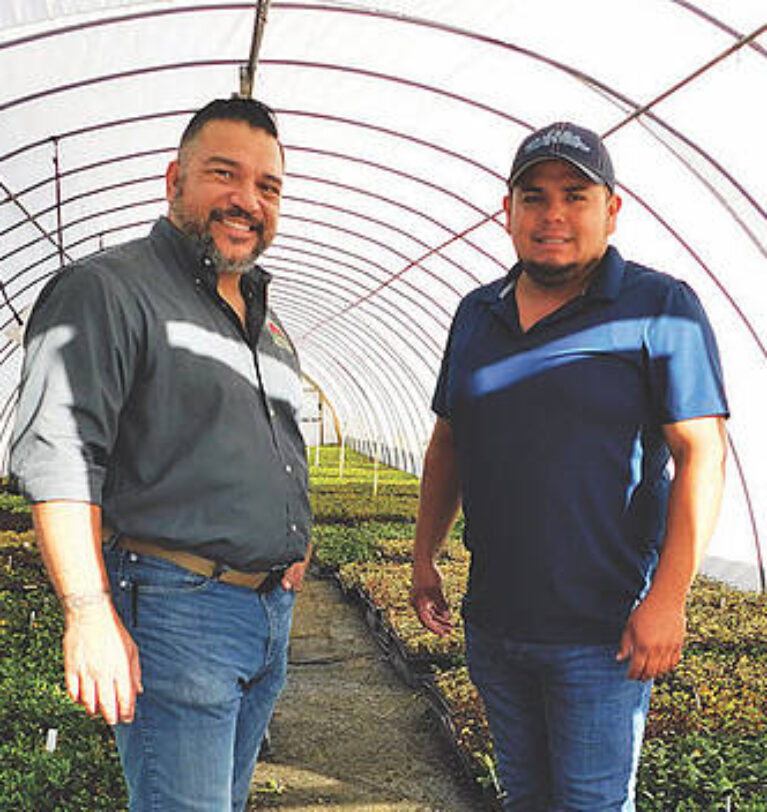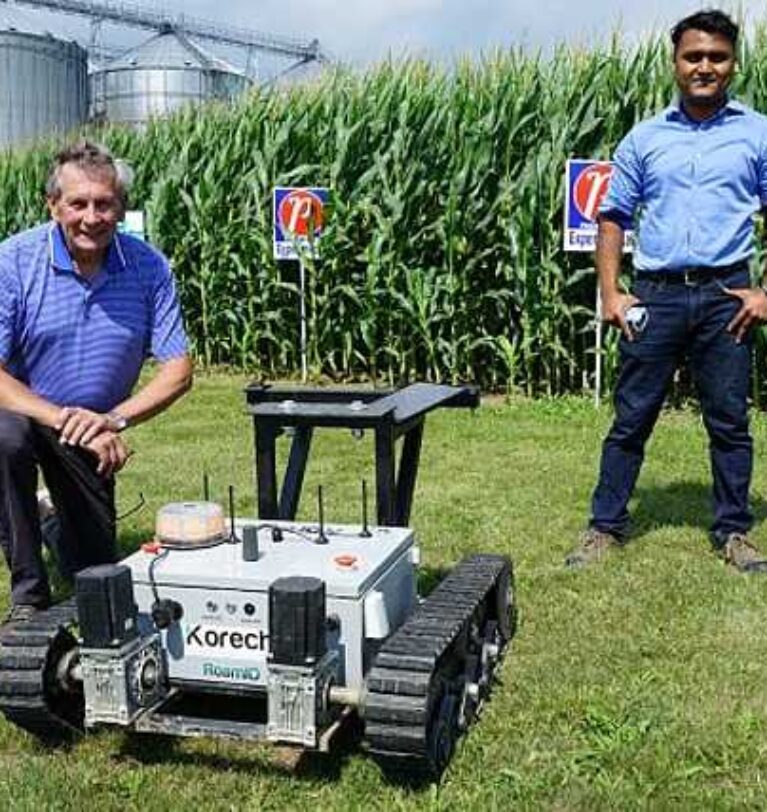OUR BLOG
The point of using Lorem Ipsum is that it has a more-or-less normal distribution of letters, as opposed to using 'Content here, content here', making it look like readable English
GET IN TOUCH
Latin words, combined with a handful of model sentence structures, to generate Lorem Ipsum which looks reasonable.
Safe transport of pallets and stacked goods can be guaranteed with strong and reliable strapping machines. Steenks Service offers a wide range of horizontal and vertical strapping machines, which are available as both automatic and semi-automatic models. A popular strapping machine is the Reisopack 2905.
The Reisopack 2905 is a state-of-the-art automatic strapping machine from Steenks Service. This machine can work independently and can be integrated into an automated production line. This modern machine is ideal for strapping large amounts of pallets and is easy to program and use.
Some unique selling points of the Reisopack 2905 are:
· Production speed of approx. 72 seconds (with 3 straps and pallet corners)
• Automatic pallet corner detection
· Corner boards are pressed automatically onto the corners of the pallet
• Double stock of corner boards
• Adjustable electronic band tension
• Coloured touchscreen with instructional videos
Conversion to mobile model possible
A Reisopack 2905 can also be built into a mobile machine, so that it can strap multiple pallets without manual transport of pallets being necessary. In this case, the strapping machine moves towards the pallet and straps it accordingly. This can make your independent strapping machine work twice as efficient.
Contact
You can visit the Steenks Service website for more information: www.steenks-service.com. You can also reach Steenks Service by calling 0174- 510 266 or by email on info@spam-protectsteenks-service.com.
The agriculture sowing area of Russia was 79.2 million hectares (4.6% of the total Russia national territorial area) in 2018 with a predicted increase by 1.3 million hectares in 2019. This area is mainly located in the Southern continent, near or in East Europe.
Russia Agriculture Map
In the agricultural production structure of enterprises between 2000 and 2018, households of citizens dropped from 51.6% to 31.0%, whereas at the end 2018, agricultural organizations took 56.5% and household farms accounted 12.5%. It indicates that after the collapse, agriculture experienced low efficiency and now is highly mechanized. Agricultural machinery companies attended and occupied the majority of the sector conference.
The produced crops were illustrated by their percentage. Major cereals, beetroots, potatoes and sunflowers were counted as top crops (data source “BRICS Joint Statistical Publication 2018”). In detailed divisions, cucumbers and tomatoes exceeded production by 2.4 and 2.8 million tons, respectively. This high yield was closely followed by sugar beet. It benefited with the greenhouses production area which increased 28.8%, as calculated by the Ministry of agriculture of Russia 2018.


The sown area under cereal and grain cultivation in Russia in 2018, by crop and federal district (in 1,000 hectares) (sourcing: Statista 2020)
Overview agrochemical in Russia
Agrochemicals consumption in Russia in 2018 reached 68.3 thousand tons, worth US$708 million, whereas China exported 40.5 thousand tons, agrochemicals worth $304 million to this country. The consumption of herbicides was higher than fungicides and then insecticides. Following are the top five consumed products in three categories.

Following are the top 10 China pesticides exported to Russia in 2018. Formulation exports was twice that of technical products. Still, within those years, the supplier companies were relatively stable, and even bulk product Glyphosate, had less than 15 suppliers on average.

The Russian market for plant protection is dominated by imported products. Domestic production is mainly represented by three largest manufacturers such as August, Shchelkovo and Agro Expert Group, but still, their basic components were imported.
Dark horse product and supplier
Dark horse Chinese suppliers were analyzed according to the export volumes to Russia. SYNWILL witnessed rapid development, jumping from a ranking of 118 to move into the Top 10.
| Chinese suppliers | 2017 | 2018 | 2019 |
| Synwill Co.,Ltd | 118 | 24 | 6 |
| YongNong BioSciences CO.,Ltd | 76 | 19 | 8 |
| Lier Chemical Co.,Ltd. | 18 | 8 | 7 |
Table1: Ranking according to the company export volume to Russia, 2017-2019
Dark horse products were analyzed according to the export volume to Russia. Product changes were not significant.
| Products | 2017 | 2018 | 2019 |
| Imidacloprid 97% TC | 54 | 6 | 7 |
| Fenoxaprop-p-ethyl 98% TC | 48 | 65 | 8 |
| Clopyralid 95% TC | 32 | 19 | 13 |
Table2: Ranking according to the product export volume to Russia, 2017-2019
In the new sample formulations during 2018 and 2019, the products which appeared were those which exported 20 kg and increased export volume next year: Fomesafen 250g/L SL, Haloxyfop-P-methyl 104g/L EC, and Imazamox 33g/L+Imazapyr-isopropylammonium 15g/L SL, etc.
By Yutian Lu
Source: Ag News
Photo: <a href=”https://www.freepik.com/free-photos-vectors/food”>Food photo created by bearfotos – www.freepik.com</a>
Under the agreement, Royal Brinkman will have the right to promote and distribute Current’s horticulture Arize™ grow lights solutions and upcoming Lucalox™ High Pressure Sodium lamps to the U.K. horticulture market.
Current will be the exclusive lighting provider for Royal Brinkman U.K.
Together, the two companies will collaborate on driving the horticulture industry forward while providing exemplary service for growers. This includes identifying modern and environmentally friendly solutions, such as industry-leading energy-efficient grow lights for greenhouses, indoor farms or controlled environment facilities that help provide greater yields, more harvests and higher profits.
Photo Courtesy of Hort News
“We are absolutely thrilled to work exclusively with Royal Brinkman. They have a reputation for being the best in the horticulture industry, and that means they are also known for choosing the best partners,” said Malcolm Yare, Horticulture Business Development Manager at GE Current, a Daintree company. “We believe that Current’s grow lights lead the market and will be a valuable asset in our push for more sustainable, higher-quality crop production.”
Glenn Notley, Managing Director at Royal Brinkman, said: “Current’s Arize™ product range is at the forefront of the horticulture industry, and we’ve seen them succeed in all types of indoor farms, vertical farms and greenhouses. We are pleased to work with them to introduce their technology to our growers in the U.K.”
A large portion of the partnership will be assisting the burgeoning cannabis market in gaining a foothold. Royal Brinkman recently launched Can-Hub, a top-to-bottom resource for cannabis growers to help them find the equipment and expertise they need in one reliable online location. Current has also made inroads into this market: In 2019, it introduced the Arize Element L1000, a grow light specifically designed for cannabis that has been shown to promote higher cannabinoid levels and better crop yield than traditional solutions.
While the relationship is only within the U.K. for now, both Current and Royal Brinkman are optimistic about the possibility of expanding the partnership into other countries.
Source: Horticulture.pk
Growers in states that have legalized recreational or medical cannabis are facing at least at least one key challenge: More than 90% of what they grow is considered refuse or plant waste, for which disposal is expensive. This dual situation has created a burgeoning industry to explore new methods for using the whole hemp plant and more sustainable ways to extract value from its stalk and hurd, the woody inner part of the stalk.
Charles Cai, a Research Engineer and Adjunct Professor at University of California, Riverside’s College of Engineering Center for Environmental Research and Technology, has developed and patented an improved pulping method that uses a naturally derived solvent, creates no toxic waste, emits no carbon dioxide, and converts nearly 100% of the hemp plant into usable components, such as cellulose fiber for use in textiles and construction, resinous lignin for use in bioplastics, sugars for use as sweeteners, and extractives for use in wellness products.

Traditional hempcrete made with untreated hemp hurds (left). Experimental hempcrete, made with CELF-treated hemp fibers (center) and agitated CELF-treated fibers (right). Photo: Charles Cai
The method, called Co-solvent Enhanced Lignocellulosic Fractionation, or CELF, uses a renewable and highly recyclable solvent to perform pulping under mild conditions, saving process energy while generating zero harmful emissions. The only waste is a small amount of mineral ash that is filtered out of the process and can be used as a soil amendment. CELF was originally conceived to help convert plant waste into biofuels. However, its effectiveness at deconstructing plant matter makes it a Swiss Army knife for all plant processing. Its scientific merit was recently proven by one of the world’s fastest supercomputers.
Now, Cai is working with a team of undergraduate students to commercialize the hemp-processing technology through funding from the EPA’s People, Prosperity and the Planet Program, or EPA P3. Last year, the team demonstrated proof of concept for using the CELF pulping method, using it to make an improved type of hempcrete, a concrete-like, carbon sequestering building material made from hemp fibers.
Source: Horticulture.pk
After eight years of service in the Marine Corps, Ariel Montanez wasn’t really considering a career in horticulture. “The only thing I knew about plants was how to use them as camouflage,” says Montanez, who served in Okinawa and other deployments around the world before finishing his service at Camp Lejeune in North Carolina. “I never even thought of plants as a business.”
But after earning his business degree, Montanez landed his first post-military job at Monrovia Nursery in 2006 as a human resource assistant.
He worked his way through roles in shipping and logistics, purchasing and maintenance before Monrovia closed its North Carolina facility. At that point, Montanez interviewed for a similar shipping role at Pender Nursery in Garner, North Carolina — but they offered him the position of general manager instead.
“I told them, ‘Look, you realize I don’t have a horticulture background. I don’t know plants,’” Montanez says. “But what I did understand was how to set processes and how to organize people.”
Even without classic plant knowledge, Montanez’s military background provided the right mix of skills to lead the growing team at Pender Nursery, where he’s been since 2013.
“That’s probably the one thing that has helped me as general manager, my military experience: how to organize people, how to motivate people, how to find and develop talent,” Montanez says. “The leaders I had in the military challenged me to be better and work harder, and that’s something I bring to this role. I enjoy seeing people grow and develop.”

Pender Nursery has a diverse inventory on 40 acres.
Troop mentality
Although Montanez learned leadership from the Marine Corps, he’s definitely “not a drill instructor style” manager.
“I think the drill instructor style works for building Marines, but not necessarily for leading employees. You get more out of people by motivating them,” he says. “I’ve worked for people who had an authoritative leadership style, and honestly, I didn’t enjoy that. I’d rather work for somebody who valued my opinions.”
Instead, Montanez works hard to foster a team environment where everyone has a voice. “From the beginning, I wanted to instill a culture of respect, where people feel that their ideas matter and they’re taken seriously,” he says.
To that end, Montanez meets with the growing, potting and propagation teams weekly to make sure everyone stays on the same page. They discuss plant issues first, then people and processes second – but he’s careful to keep meetings on point.
“If we get into a subject that needs more planning and thought, we’ll table it and (reassign it to) the right team leaders so we’re not dragging it out,” he says. “A lot of people dread meetings because they get stuck in meetings that don’t pertain to them, so I try to make sure that our meetings are meaningful.”
When he stepped into the GM role, Montanez faced a steep learning curve juggling plant production cycles for hundreds of SKUs in Pender’s diverse inventory. The wholesale nursery, which was the first licensed grower of Encore Azaleas on the East Coast, also grows perennials, groundcovers, shrubs, trees and grasses on about 40 acres (10 of which are covered).

By strictly managing inventory, Montanez has been able to solve labor problems at Pender Nursery.
“If you don’t manage your inventory, you’ll never be able to manage your sales,” he says, “so I spend a lot of time looking at our crops to see what’s moving. I’m strict about inventory management because of the effect it has on the bottom line.”
To keep products moving through Pender Nursery at a profit, Montanez closely assessed all the processes involved in the operation, and then identified opportunities to improve efficiency. One of the biggest changes happened on the potting line.
“When I first took over, the potting team consisted of 17 people, and the machine we were using wasn’t very efficient,” he says. “By sitting down and looking at how our nursery is arranged, asking ourselves some questions, and experimenting with different processes, we were able to reduce that headcount down to eight people. We ended up eliminating the machine; we’re getting more done without it, and we’re really happy with the quality of the potting.”
Through continuous improvement and strict inventory management, Montanez streamlined the nursery’s operation to alleviate ongoing labor challenges. “When I took over in 2013, we had 60 to 65 people, and just through analyzing processes, we’ve been able to dwindle that down to 40 people at peak,” he says. “We’ve been able to really impact our labor costs and our bottom line.”
To help Pender Nursery improve its plant quality, and ultimately, maintain profitability, Montanez continues to innovate more efficient solutions.
“Be flexible and be prepared for change, because change is always going to happen,” he advises other growers. “If you fear change, that’s the nail in the coffin for a lot of businesses. Don’t be afraid to make mistakes and learn from them so you can become better.”
Source: Horticulture.pk
Already owners of a DOT Power-Platform, operations manager Chuck Baresich says the company’s new investment in a RoamIO autonomous robot is specifically intended to help employees accomplish more in less time.
“We wanted this robot because every year we have a range of small monotonous tasks that just don’t get done,” says Baresich. “My vision is RoamIO becomes a partner unit to our employees that can increase the productivity of existing staff. It takes some skill to work, so its augmenting skilled workers ability to get things done.”
The RoamIO robot is separate unit from any attachment. The steel rack shown on the current prototype was added at Haggerty Creek to hold an optical soil sensor and hopper for cover crop seeding. – Photo: Matt McIntosh
What is RoamIO
RoamIO autonomous robots are developed and marketed by Ontario-based startup Korechi Innovations Inc. The unit has both LiDAR and Radar, and operates using RTK. It’s controlled via a tablet, though both the tablet and unit itself have their own internet signals. This, says Sougata Pahari, founder and chief executive officer of Korechi, helps expand the range at which RoamIO can operate.
“Paths are generated on the tablet. This is sent to a relay box on the machine, and it starts moving,” says Pahari. “It has a movement resolution that can bring it to within five millimeters of the specified destination within the field. Even if it’s told to go a kilometer away it is within one inch.”
Other specifications
• Speed of 6 km/hr
• Powered by Lithium-ion batteries with an eight-hour battery life
• Between 3000-4000 charge cycles
• Carrying capacity of 660 pounds (300 kilograms)
• Average weight distribution of three pounds (1.4 kilograms) per square inch when loaded with fertiliser, cover crop seed, etc.
Main prototype
The unit currently employed at Haggerty Creek – one of two currently in use, and the only one working commercially – is actually Korechi’s main prototype used for demonstrations and further research. Baresich is due to receive a larger version (five feet by 45 inches in size), though shipping issues have delayed final construction.
Even with the larger size, Baresich says his forthcoming machine is still small enough to fit in the back of most pickup trucks. That means no special licenses are required to transport it, and more people will be able to use it.
Soil scanning and cover crop application
Unlike some autonomous farm equipment, RoamIO exists as an entirley separate machine – that is, not one built for a select purpose. This is what originally attracted Baresich to the design, since he saw opportunity to augmented it with a wide range of implements. These could be separately added, removed, and controlled.
In March of this year, for example, Baresich attached a seed hopper to the still-working RoamIO prototype in order to apply clover as a cover crop. At the time, he said uniform dispersal and complete coverage of 50 acres (450 pounds) was achieved in six hours using a spreading distance of 40 feet, although a wider distance was possible. Some initial challenges were resolved with slight modifications, though no issues with terrain (mud) were experienced.
Now Baresich and his colleagues are using RoamIO for soil testing and analysis. This is done by attaching a SoilOptix soil sensor camera.
“Soil sampling is a tedious task and takes a while. It involves taking strategic core samples, as well as very consistent, slow driving to ensure the optical sensor works properly. Inconsistent speeds skew the data. Instead of doing 250 acres a day when we send someone to the field, we should now be able to do 400 or 500,” says Baresich.
“It could also be used for weed and brush control. We need to make sure those pathways along the field stay open by having them sprayed a couple times a year. We have to be very vigilant about resistant weeds. A small sprayer tank and a six-foot swath is all you would need.”
Employ RoamIO in disease and pest scouting
In the long term Baresich says they also hope to employ RoamIO in disease and pest scouting, as well as fertilizer application. Ideally, they will eventually acquire an additional unit to support staff.
“We had acres this spring that just didn’t get done,” he says. “Say we charge $ 20 to $ 25 an acre for soil optical analysis work – we will be doubling that output.”

Korechi employees Jim Clark (left), chief marketing officer, and Sougata Pahari (right), founder and chief executive officer, pose with their commercially-working RoamIO robot at Haggerty Creek Ltd. in July, 2020. – Photo: Matt McIntosh
Cost, and further refinement
Baresich’s forthcoming larger unit brings a price tag of $ 75,000. Baresch says he has “been assured” a full ten-year battery life, with 80 per cent power potential left at that time.
“I’d budget maybe $ 1000 a year for maintenance,” he says. The only other anticipated costs relate to the data support systems associated with their existing precision technologies. “I’ve really learned over the years – you really need the data support,” says Bareisch.
The cost of Korechi’s prototype RoamIO is not fixed since it continues to undergo changes based on feedback from Baresich and his colleagues. The initial speed of the unit, for example, was only four kilometers per hour. This is inadequate for larger scale fields, though not for the smaller vineyards and orchards for which it was originally designed.
“I wanted 12 kilometers per hour, but that ended up being a bit too fast to maintain consistency [in soil analysis], so we met in the middle at 6 kilometers per hour,” says Baresich.
Next RoamIO model named after Haggerty Creek
For Pahari, working with Haggerty Creek has been invaluable to RoamIO’s design. “Not being involved directly with the agriculture industry, there were uses and complications we did not foresee,” Pahari says. They experienced so many revelations, in fact, the next model will be named after Haggerty Creek Ltd.
Names aside, Baresich reiterates his belief that small, adaptable autonomous units are a reasonable solution for smaller farms – ones that otherwise cannot afford larger, much more costly equipment, or full-time employees. “If you’re growing 500 acres it doesn’t might not make sense to have a hired person full-time,” he says.
Click here for more information.
Source: Horticulture.pk







